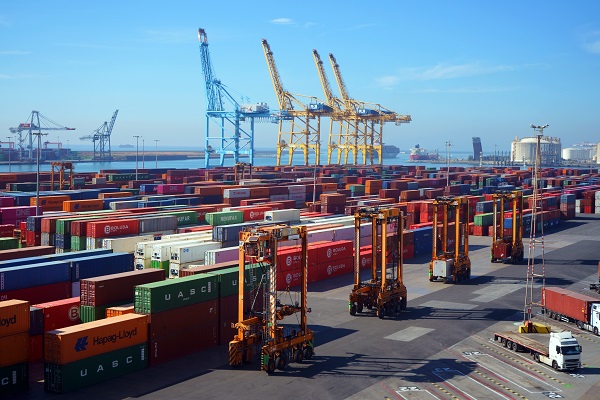- Telefónica will take advantage of its physical presence at Mobile, reinforced at this edition with a complete virtual proposal, to showcase the success stories with which it is helping large industry to tackle its digital transformation.
- In the Port of Bilbao, with the help of Allread and the Port Authority of Bilbao, through edge computing and deep learning technologies, an innovative step is being taken in the decarbonisation and digitalisation of port goods access.
- Telefónica, together with APM Terminals and Mobile World Capital, is working on a pilot project in the Port of Barcelona to improve industrial and port security through the use of 5G networks, edge computing and vehicle connectivity technologies.
- The projects developed with Navantia or Gestamp are among the real experiences that demonstrate the possibilities that the application of the most innovative technologies provides to the industrial world.
Madrid, 22 June 2021. Telefónica will show during its participation in the Mobile World Congress (MWC) in Barcelona how it is implementing 5G, edge computing and deep learning technologies in the industry so that it can take full advantage of the extraordinary opportunity offered by digital transformation. In line with its commitment to putting technology at the service of people and the protection of the planet, reducing environmental impact and offering its customers solutions that allow them to develop their activity in a more efficient and sustainable way, Telefónica has developed a series of services and applications based on these new technologies that it will showcase during Mobile.
Through different success stories collected in the ‘Connected Industry’ demo, available both at the company’s physical stand in the MWC facilities and virtually in the digital twin, Telefónica demonstrates that all these technologies are already being applied and constitute a measurable reality that can be replicated in other cases or industries. The digitisation of the industrial fabric is key to ensuring new business opportunities, boosting competitiveness and efficiency and guaranteeing the sustainability of the industry, achievements that will be visible in the experiences gathered in the demo and which are also reflected in the transformation booklet that explains, with numerous details and references, various success stories in which the most pioneering and innovative technologies have been combined.
Pioneering technologies applied to success stories
This is the context of Telefónica’s project carried out with the Port Authority of Bilbao and Allread, which consists of the application of artificial vision technologies based on deep learning, for the real-time recognition of vehicle, container and goods number plates and badges, allowing automated access control. The innovative algorithm, which manages to read the plates even if they are damaged or under adverse weather conditions, is housed in Telefónica’s edge computing, extending the functionality of the cameras and guaranteeing control of the access gate in minimum time from the network, as Telefónica has these artificial intelligence capabilities very close to the location of the Port. A key factor has been the reuse of the cameras already installed in the Port of Bilbao which, thanks to Telefónica’s network, edge computing and deep learning, are able to take more accurate readings in real time.
This project is a fundamental part of making the digital transformation of ports a reality with the automation of their processes to reduce waiting times for vehicles at the access gate, increase the traceability and safety of dangerous goods and take a step towards decarbonisation without increasing infrastructures and reducing costs.
Telefónica, together with APM Terminals and Mobile World Capital, is also working on a pilot project to improve safety in ports thanks to the use of 5G networks. The aim of this solution is to coordinate the terminal’s port traffic by being able to anticipate and notify potential accidents. This use case, which is based on C-V2X connected car technology, the low latency of 5G communications, the processing capacity of edge computing servers and precise location technology, aims to make APM Terminals Barcelona a safer place for workers.
The solution natively connects the port’s cranes with other cranes, as well as with the terminal’s trucks and personnel, the latter equipped with a smartphone app that warns in real time when there may be a physical safety problem, such as a collision or a run-over.
The demo also includes a use case of predictive maintenance with IoT and business analytics. The virtue of this solution lies in measuring the technical condition of port machinery with the aim of anticipating possible failures and prolonging its useful life. The incorporation of IoT together with business analytics allows decisions to be made to avoid accidents and reduce maintenance costs and downtime by improving production. The key lies in the ease with which devices can be monitored. Through its mobile sensors, it democratises the use of predictive maintenance, which is easier to use and install. By using 5G, mobile solutions allow multiple devices to be deployed at the same time to monitor much more equipment in factories and therefore make production more reliable and robust. It is a real example for other companies of any size to use the technology to accelerate their digitisation in the industry.
Telefónica incorporates 5G, edge computing and deep learning technology solutions into industry to make it more flexible, connected to stock, production and demand as part of the same chain. The application of these technologies makes it possible for the company to showcase other success stories at the MWC, both in the transformation notebooks and in the digital twin, including Navantia, a 4.0 shipyard that has combined augmented reality, edge computing and 5G. Or Gestamp which, thanks to the technology offered by Telefónica through 5G and edge computing, has taken a key step towards the smart factory.
